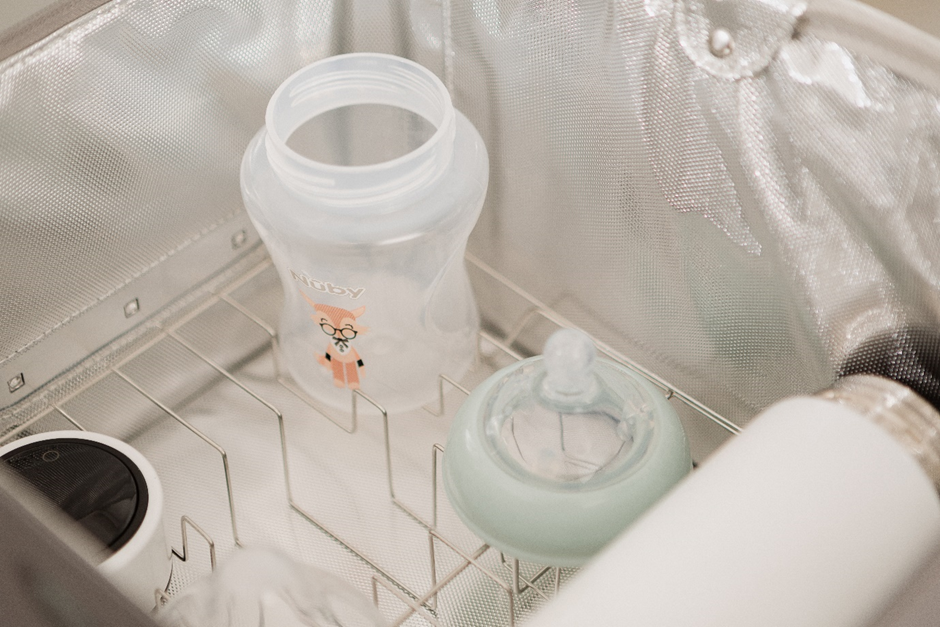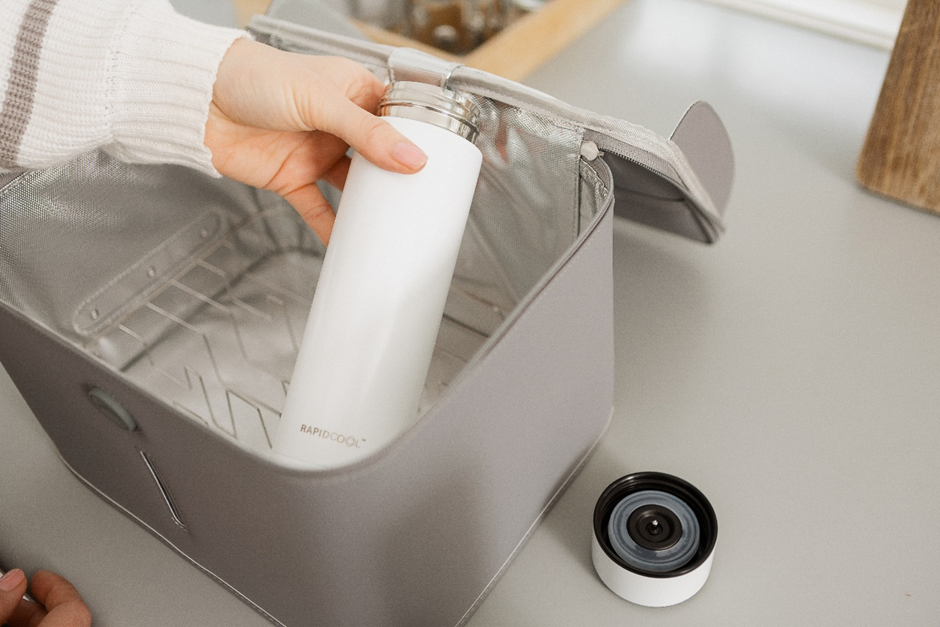Sterilising is an important step in your baby’s feeding routine. Knowing how to correctly sterilise baby bottles and baby bottle teats will help you ensure that you protect your baby’s delicate immune system in its early stages of development.
In this guide we’ve answered some of the most burning questions about sterilising baby bottles and of course our Nuby RapidCool.
How to sterilise baby bottles?

Before sterilising baby bottles, you should clean them in hot soapy water after feeds. For cleaning, you'll need both a bottle brush and a teat brush. Our silicone brush is the perfect solution, combining both into a convenient 2-in-1 tool. It features a detachable teat brush for precise cleaning, making it the only brush you'll need. Once you have done this rinse the bottles and teats in cold running water.
There are multiple options for sterilising baby bottles which we’ve broken down below.
UV sterilisation: Our 3 Minute UV Steriliser kills 99.9% of bacteria on your bottles with no water, chemicals or microwave needed. Ultraviolet light (UV) is commonly used in hospitals and other medical settings – it is an electromagnetic radiation that kills microorganisms quickly and safely.
Cold water sterilising solution: Sterilising solution can be used to sterilise baby bottles. This usually involves leaving the bottles and teats in the diluted solution for 15 to 30 minutes and the solution needs to needs to be changed every 24 hours. Please refer to the instructions on the sterilisation tablets or solution that you purchase.
Steam sterilisation: Steam sterilising involves adding water to the sterilising unit and when the water boils it creates a steam that sterilises. Some units are electrical and some are designed to be used in the microwave so it’s important that you follow the instructions provided by the manufacturer.
Sterilising by boiling: You can also sterilise baby bottles without needing any extra equipment by boiling them in a large pan of water for at least 10 minutes. Before doing this check that they are safe to boil.
How long do baby bottles stay sterile?
Although sterilising can take just a few minutes, it can last for up to 24 hours, if bottles are properly stored. Once you have sterilised your bottles, keep them safe from germs and bacteria by leaving them in in your steriliser.
How to sterilise baby bottles when travelling with a baby?
Microwave sterilising bags are a cost-effective, space-saving way to sterilise bottles when you are away from home - easy to store and carry with you for emergencies. These microwave sterilising bags from Boots come in packs of five and each bag can be used up to 20 times, that’s a total of 100 bottles…
When to stop sterilising baby bottles?
Based on NHS advice, we would recommend that you continue to sterilise all of your baby’s bottles and teats until they are at least 12 months old. By doing this for the first year of your baby’s life you will be helping to protect them from the effects of germs and bacteria – including diarrhoea and vomiting.
Does the dishwasher sterilise baby bottles? (cleaning vs sterilising)
This is a common question, so you are not alone if you are wondering about this. The simple answer is no; running your baby’s bottles and teats through the dishwasher will clean them, but it won’t sterilise them.
Though cleaning does remove some dirt and germs from items, sterilising removes these completely, in addition to killing germs and other bacteria. Sterilising is always better than cleaning on its own and is a vital step in keeping your baby bottles safe and germ-free.
After cleaning in a dishwasher, you should always sterilise your baby’s bottles using your preferred method.
How to sterilise the Nuby RapidCool?

And of course, we couldn’t create this guide without explaining how to sterilise your Nuby RapidCool.
RapidCool digital lid: Clean the digital lid with warm, soapy water. After cleaning, sterilise it using UV sterilisation or cold-water sterilisation.
RapidCool base: The base of your RapidCool can be sterilised using UV sterilisation, cold-water sterilisation, or steam sterilisation (note: it is not microwave-safe).
For further information please see the RapidCool instruction manual, you can also read our complete guide on how to use your RapidCool blog post which goes into detail on how to use it at home and out and about.
If you’re getting prepared for your baby's arrival we offer a handy Newborn Baby Bottles Starter Kit, which is an eight-piece set of everything you need to get started bottle feeding.
If you want a quick solution to sterilising baby bottles take a look at our baby bottle sterilisers, including our 3 Minute UV Steriliser which is also available in a bundle with the RapidCool Kit or RapidCool Twin Pack.
